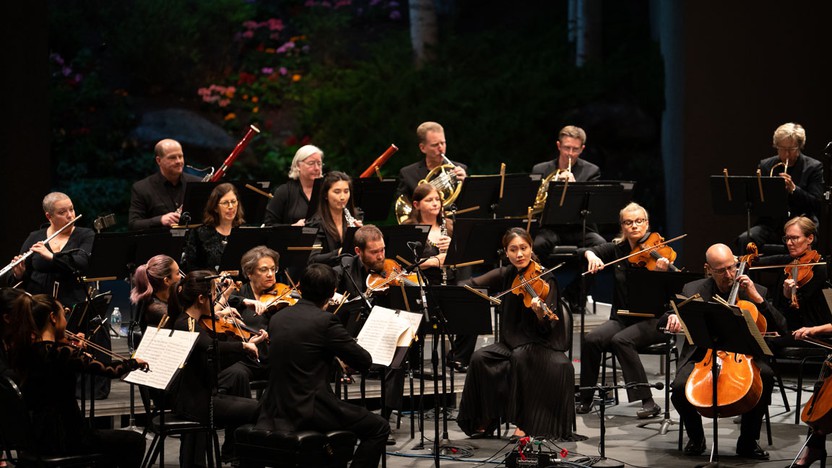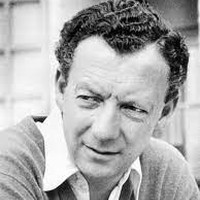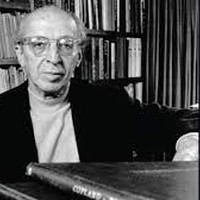Bravo! Vail: Copland’s Appalachian Spring



Benjamin Britten had a precocious start in music, studying piano and viola and composing hundreds of works by the time he was a teenager. At fourteen, Britten’s viola teacher introduced him to the composer Frank Bridge, who agreed to give Britten private lessons. “I, who thought I was already on the verge of immortality, saw my illusions shattered,” Britten later wrote about his course of study with Bridge, a demanding teacher who fostered the rigorous technique needed to round out Britten’s natural inventiveness.
Bridge’s name mostly arises now thanks to the tribute composed by his pupil in 1937. Britten accepted the commission on very short notice from the Boyd Neel Orchestra, which desperately needed a new English piece to play at the prestigious Salzburg Festival. The orchestra had already performed Britten’s Simple Symphony for Strings, making the young composer a natural choice. Britten obliged by writing the Variations on a Theme of Frank Bridge in less than a month.
The source material, taken from Bridge’s Three Idylls for string quartet from 1906, is just the slightest wisp of a melody, which Britten expanded into a set of free variations. Coming out of the dramatic introduction, a chord sustained under a series of plucks reveals itself as the start of the theme. Each brief variation highlights a particular aspect of Bridge’s personality, as outlined by Britten: the Adagio corresponds to “his depth,” the March “his energy,” and the Romance “his charm.” The next three movements drift toward parody, with a Gioachino Rossini-inspired Aria Italiana (“his humor”), a neo-Baroque Bourrée classique with prominent violin solos (“his tradition”), and an irreverent Viennese Waltz (“his enthusiasm”). A fiery Perpetual Motion (“his vitality”) clears the air for the haunting Funeral March (“his sympathy”) and the ethereal Chant (“his reverence”). The work closes with a Fugue and Finale, a testament to Bridge’s “skill and dedication.”
Aaron Grad ©2022


Xavier Foley was already winning major competitions as a bassist by the time he completed his undergraduate studies at the Curtis Institute of Music in 2016. On top of a busy schedule of concert appearances as a soloist and chamber musician, Foley has composed a large catalog of solo music for bass, and he also authored a children’s book and sells his own carbon fiber bass bows on his website. He wrote the following description of For Justice and Peace, which was premiered during a 2019 tour by the Sphinx Virtuosi, with the composer featured as one of the soloists in this heart-wrenching work full of emotional and technical demands.
“This double concerto, co-commissioned by Carnegie Hall, the Sphinx Organization, and the New World Symphony, was created to mark the 400 years of slavery ever since the arrival of the slave ship “White Lion” in Jamestown, Virginia. The work features a chorus at the end, where they sing text inspired by frequent court cases where slaves have asked for their freedom, which was often denied because of the color of their skin.
“This work also features a gavel, which represents the justice system that slowly took away colored people’s rights as the years passed. The double bass and violin represent two principal voices that paint the full picture of what life was like during slavery in what was soon to become the United States of America.”
— Xavier Foley
Aaron Grad ©2021
 Listen to Audio
Listen to Audio
In the wake of two well-received ballets set in the American West — Billy the Kid (1938) and Rodeo (1942) — Aaron Copland began Appalachian Spring in 1943. He created the ballet for the dancer and choreographer Martha Graham, and he worked under the title Ballet for Martha until not long before the premiere, when Graham suggested Appalachian Spring, borrowing a phrase from Hart Crane’s poem “The Bridge.”
Created for the 500-seat auditorium at the Library of Congress in Washington, DC, this ballet needed a suitably compact pit orchestra, so Copland used just thirteen instruments in the original version. The next year he arranged most of the ballet into a concert suite for orchestra, and his publisher later added the option heard here, which preserves the original chamber ensemble scoring while adopting the structure of the concert suite.
The wonder of Appalachian Spring is how it achieves so much using such simple and familiar musical ingredients. The first section assembles its hazy wash of consonant sonorities by enunciating plain triads and the resonant intervals of fourths and fifths. The following section energizes similarly basic materials — octave leaps, triadic intervals and descending major scales — into spry dance music. There is a tender scene for the young couple, a lively romp depicting the revivalist and his dancing minions, and then a brisk solo dance for the bride, which dissipates into a return of the gentle, triadic wash of the beginning.
The famous section that follows, starting with a theme in the clarinet, presents the tune of Simple Gifts, a Shaker dance song written in 1848 by Joseph Brackett. The humble melody fits seamlessly into the homespun, diatonic language of Copland’s score, and its increasingly grand variations rise to a transcendental climax.
Aaron Grad ©2024
The SPCO makes the Bravo! Vail premiere of For Justice and Peace by Xavier Foley, who performs the double-bass solo alongside SPCO violinist Eunice Kim. The program closes with Copland’s masterwork Appalachian Spring.
Get driving directions and find nearby parking.
Find dining options close to the venue.
View seating charts to find out where you'll be seating.
SPCO concerts are made possible by audience contributions.
For exclusive discounts, behind-the-scenes info, and more:
Sign up for our email club!
